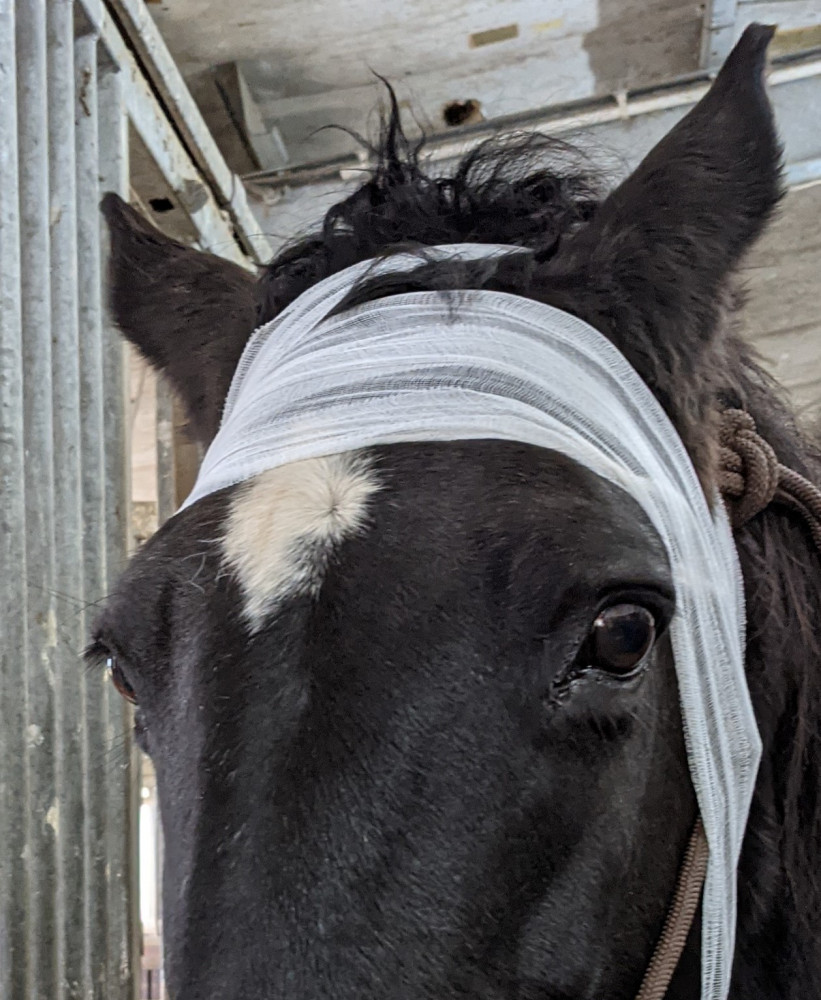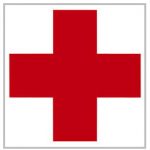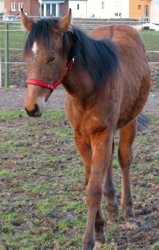Skin diseases in horses – Dermatophytosis
 Horses that suffer from a skin disease most frequently are affected by a fungal infection.
Horses that suffer from a skin disease most frequently are affected by a fungal infection.
Very itchy and highly contagious – it is very difficult to get rid of a fungal infection. According to statistics, one out of 15 horses exhibits symptoms of this type of skin disease. But what are effective prevention and treatment measurements?
A fungal infection, also called Dermatophytosis, is caused by micro spores. The fungi especially occur in horse stables with a high fluctuation of horses and where riders share cleaning and riding utensils (riding school, educational stables). A fungal infection only attacks the skin and does not spread on any interior organs.
Fungi are very contagious
Worldwide a dermatophytosis most frequently is triggered by the two species Microsporum and Trichophton. The latter one causes an immense itch, skin irritations and loss of hair. Any type of dermatophytosis is very contagious so that mostly all horses of the stable are infected. Shared cleaning and riding utensils are the typical carrier for the infectious spores. But also the direct contact on the pasture or the common use of a pole for rubbing easily lead to a quick spread of the disease. Spores prefer wet and musty areas and often live on the walls and the ceiling of the stable. This makes an effective prevention very difficult.
In general especially young horses often suffer from a dermatophytosis. They did not have enough time to develop a natural defense against the triggers and are an easy potential target for attacks. Moreover a weak immune system and an excessive washing of the coat (especially with washing shampoos including surfactants) destabilize the natural balance of the horses’ coat and make the animal easy to infect.
Therefore veterinarians recommend riders to use baby shampoo or neem oil products. Moreover scientists found out that some horses suffered from a worm infestation, a sweet itch or stress before the vet diagnosed a dermatophytosis. Additionally wrong feeding and a non species-appropriate husbandry influence the health situation of the horse negatively, cause a weak immune system and make the organism prone for infectious diseases.
Round patches and loss of hair
The fungus infects the hair and causes hair breakage. The hair begins to fall out until there finally are round and scaly patches. If the horse continues to rub the patches they become bloody and this can lead to crusty wounds. In general fungi settle down at wet and musty areas. They attack the parts of the horses´ skin where the animal sweats (area of the saddle and between the legs and belly). If these areas are infected no further riding is possible until all symptoms completely healed.
Horse owners need to notice the first symptoms of a dermatophytosis
It is crucial that the horse owner is attentive and regularly controls the skin of the horse. This is the only way how skin diseases (Equine Sarcoids and dermatophytosis) can be diagnosed very early. Even if a fungal infection at first seems to be quite harmless and does not directly attack the horses´ health, the medical treatment and therapy is very important. Without any treatment the dermatophytosis can lead to a scar formation in the area of the saddle. Then, any kind of riding becomes very painful for the animal and in the end a continuation of riding can become completely impossible. Additionally a lengthy fungal infection weakens the entire physical performance of the animal. The organism uses important nutrients (minerals, vitamins) for the fight against the fungi so that there is a lack for the general training and performance. The horse is tired and due to the weak immune system very delicate for infectious diseases. The horse owner needs to react because otherwise the respective patches can easily be infected by bacteria. And this, a dermatophytosis combined with a bacterial infection, is very complex and difficult to treat.
Hygienic and a strong immune system – these are the key elements for prevention and treatment
Fungi prefer musty and wet stables. A lack of hygienic and shared cleaning and riding utensils make it very easy for the spores to spread in the whole stable. Regular airing, fresh air and sun on the pasture, balanced feed, own riding utensils – a species-appropriate husbandry is the best and most important prerequisite for a healthy horse and a strong immune system.
Washing, grooming, disinfection – the treatment of a dermatophytosis is lengthy and requires discipline
Washing the horses´ skin
Generally it is very difficult to get rid of fungi. Therefore a medicinal treatment requires a lot of discipline and endurance of the horse owner. Even if the horse does not exhibit any symptoms anymore the treatment needs to go on for several further weeks. The vet normally prescribes the fungicidal medicine Imaverol and Mycophyt. At the initial stage of the disease the horse owner can also try out a mix of fruit vinegar and water. The two substances need to be mixed in a ratio of about 1 : 2 (1/3 fruit vinegar and 2/3 water) before one can carefully dap the substance on the respective patches. If the disease however already is in a more advanced stage one should directly start with medicinal substances. Crusty surfaces on the patches need to be removed carefully with a soft sponge and disinfectant soap. Otherwise the medicine does not reach the infected skin and cannot operate effectively against the fungi. Regularly washing is the most important part of the medicinal treatment (every 2-3 days). In winter this can clearly lead to several problems. The wet skin of the horse can cause a hypothermia of the organism. Some stables already offer a tanning bed that quickly dries the skin of the animal. If this tanning bed however is not available the horse owner must spray or dap the medicinal substances on the respective patches. Afterwards the horse needs to get covered with a warm blanket.
Cleaning and disinfection of the horses´ direct environment
One can only fight against fungi effectively if the stable and the direct environment of the horse are free of the spores. Horse box, stable, paddock and especially cleaning utensils, saddle, blankets and tacks need to get cleaned and disinfected hearty (blankets need to be in the washing machine for at least one hour at 60 degrees). Undoubtedly, the entire cleaning procedure requires a lot of time and endurance. However this is the only possibility to get rid of the spore infestation.
Vaccination against dermatophytosis
A regular vaccination against dermatophytosis supports the entire immune system. Even if the vaccination cannot completely prevent a fungus infection it clearly reduces the symptoms and positively influences the medicinal treatment. The horse needs to get vaccinated regularly and the whole procedure only is effective if it takes place with all horses at the same time. This clearly is the only way to avoid a general contagion. Many positive experiences already lead to the fact that the vaccination is obligatory for several tournaments and sale events.
Vaccination however is not only a preventative measurement but also therapy. If the horse already exhibits the symptoms of a fungal infection a later vaccination accelerates the healing process. The horse needs the vaccination 2-3 times at an interval of 14 days. After some days one can already notice the first healing processes on the skin.
Attention: Humans can also be infected with a dermatophytosis
A dermatophytosis is a so called zoonosis. This means that the spores can also infect humans. Referring to this one always needs to wear gloves while cleaning and disinfecting the riding and cleaning utensils!
Sustained treatment leads to good healing chances
Every fungal infection is different – and therefore every type of infection requires the respective treatment. In most cases only a combination of the different treatment possibilities leads to success. With discipline and endurance the healing chances generally are very high.
Surf tips:
- Horse grooming – sometimes less is more
- Skin disease in horses – Equine Sarcoids
- Sweet itches – an allergic reaction to insect stings
—All statements without guarantee—


